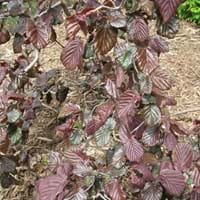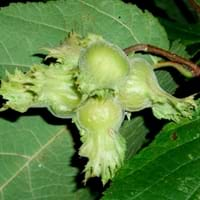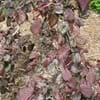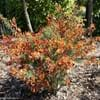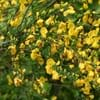Life Span
Annual
Perennial
Origin
Europe, Northern Africa, Western Asia
North America, Northeastern United States, Mid-Atlantic United States, Southeastern United States, Canada
Types
Shrub
Not Available
Habitat
Woods
Mediterranean region
USDA Hardiness Zone
4-8
3-9
Sunset Zone
2a, 2b, 3a, 3b, 4, 5, 6, 7, 8, 9, 14, 15, 16, 17, 18, 19, 20
2b, 3a, 3b, 4, 5, 6, 7, 8, 9, 14, 15, 17, 18, 19, 20
Habit
Thicket/Colonizing
Thicket/Colonizing
Flower Color
Yellow
Yellow, Red
Flower Color Modifier
Not Available
Not Available
Fruit Color
Brown
Not Available
Leaf Color in Spring
Green
Green, Light Green
Leaf Color in Summer
Green, Dark Green
Green, Dark Green
Leaf Color in Fall
Yellow, Green
Red, Dark Red, Copper
Leaf Color in Winter
Not Available
Not Available
Leaf Shape
Lobed
Heart-shaped
Plant Season
Spring, Summer, Fall, Winter
Spring, Summer, Fall
Sunlight
Full Sun, Partial Sun, Partial shade
Full Sun, Partial Sun, Partial shade
Type of Soil
Clay, Loam, Sand
Loam
The pH of Soil
Acidic, Neutral, Alkaline
Neutral, Alkaline
Soil Drainage
Well drained
Average
Bloom Time
Early Spring, Spring, Late Winter
Early Spring
Tolerances
Not Available
Drought
Where to Plant?
Ground, Pot
Ground, Pot
How to Plant?
Grafting
Seedlings, Transplanting
Plant Maintenance
Medium
Medium
Watering Requirements
Average Water Needs, Do Not over Water
Average Water Needs, Do Not over Water
In Summer
Lots of watering
Lots of watering
In Spring
Moderate
Moderate
In Winter
Average Water
Average Water
Soil pH
Acidic, Neutral, Alkaline
Neutral, Alkaline
Soil Type
Clay, Loam, Sand
Loam
Soil Drainage Capacity
Well drained
Average
Sun Exposure
Full Sun, Partial Sun, Partial shade
Full Sun, Partial Sun, Partial shade
Pruning
Remove damaged leaves, Remove dead branches, Remove dead leaves
Remove damaged leaves, Remove dead branches, Remove dead leaves
Fertilizers
All-Purpose Liquid Fertilizer
All-Purpose Liquid Fertilizer
Pests and Diseases
Red blotch
Red blotch
Plant Tolerance
Drought
Drought
Flower Petal Number
Not Available
Not Available
Foliage Texture
Coarse
Medium
Foliage Sheen
Matte
Matte
Attracts
Not Available
Birds
Allergy
Not Available
Hay fever, Oral Allergy
Aesthetic Uses
Showy Purposes
Beautification, Showy Purposes
Beauty Benefits
Not Available
Anti-ageing, Glowing Skin, Good for skin and hair, Skin cleanser
Environmental Uses
Air purification
Air purification
Medicinal Uses
Minerals, Rich in protein, tonic in pregnancy, Vitamin E
Astringent, Febrifuge
Part of Plant Used
Fruits, Leaves, Seeds, Wood
Bark, Leaves, Twigs
Other Uses
Culinary use, Used for its medicinal properties
Used as Ornamental plant, Used for its medicinal properties
Used As Indoor Plant
No
Yes
Used As Outdoor Plant
Yes
Yes
Garden Design
Feature Plant, Foundation, Mixed Border, Topiary, Bonsai, Espalier
Edible, Feature Plant, Foundation, Fruit, Fruit Tree, Mixed Border, Screening, Wind Break
Botanical Name
CORYLUS avellana 'Contorta'
CORYLUS americana
Common Name
common hazel
American Hazelnut
In Hindi
contorted filbert
अमेरिकी हेज़लनट
In German
contorted filbert
amerikanische Haselnuss
In French
noisetier contorsionné
américaine noisettes
In Spanish
avellana contorsionada
Americana avellana
In Greek
παραμορφωμένες φουντουκιού
American Hazelnut
In Portuguese
filbert contorcido
americana avelã
In Polish
wykrzywioną leszczyna
Amerykański orzech laskowy
In Latin
contortis Avellanam
American Hazelnut
Phylum
Magnoliophyta
Magnoliophyta
Class
Magnoliopsida
Magnoliopsida
Family
Betulaceae
Betulaceae
Clade
Angiosperms, Eudicots, Rosids
Angiosperms, Eudicots, Rosids
Tribe
Not Available
Coryleae
Subfamily
Not Available
Coryloideae
Number of Species
Not Available
Not Available
Season and Care of Contorted Filbert and American Hazelnut
Season and care of Contorted Filbert and American Hazelnut is important to know. While considering everything about Contorted Filbert and American Hazelnut Care, growing season is an essential factor. Contorted Filbert season is Spring, Summer, Fall and Winter and American Hazelnut season is Spring, Summer, Fall and Winter. The type of soil for Contorted Filbert is Clay, Loam, Sand and for American Hazelnut is Loam while the PH of soil for Contorted Filbert is Acidic, Neutral, Alkaline and for American Hazelnut is Neutral, Alkaline.
Contorted Filbert and American Hazelnut Physical Information
Contorted Filbert and American Hazelnut physical information is very important for comparison. Contorted Filbert height is 180.00 cm and width 180.00 cm whereas American Hazelnut height is 300.00 cm and width 340.00 cm. The color specification of Contorted Filbert and American Hazelnut are as follows:
Contorted Filbert flower color: Yellow
Contorted Filbert leaf color: Green
American Hazelnut flower color: Yellow and Red
- American Hazelnut leaf color: Green and Light Green
Care of Contorted Filbert and American Hazelnut
Care of Contorted Filbert and American Hazelnut include pruning, fertilizers, watering etc. Contorted Filbert pruning is done Remove damaged leaves, Remove dead branches and Remove dead leaves and American Hazelnut pruning is done Remove damaged leaves, Remove dead branches and Remove dead leaves. In summer Contorted Filbert needs Lots of watering and in winter, it needs Average Water. Whereas, in summer American Hazelnut needs Lots of watering and in winter, it needs Average Water.
